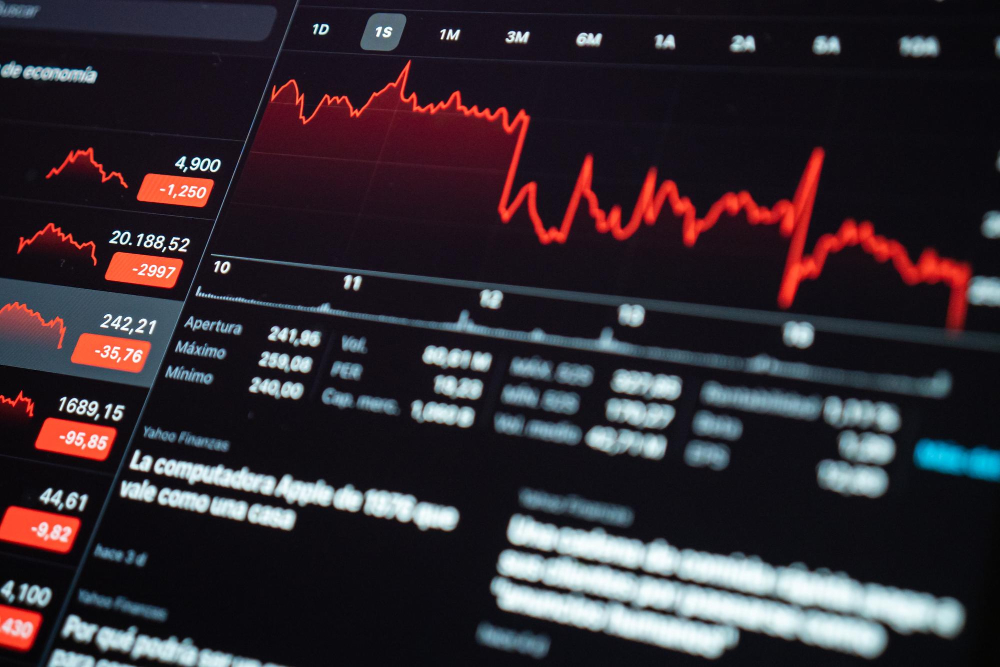
What is S&P500 trading? A comprehensive guide for beginners looking to start investing. date_range 5 พ.ค. 2025
What is the S&P500?
The S&P 500, or Standard & Poor's 500 Index, is one of the most well-known and widely followed stock indices in the world. It compiles the stock prices of large companies in the United States, totaling 500 companies, covering all sectors of the economy including technology, healthcare, finance, energy, and other industries.
What makes this index stand out is the use of Market Capitalization weightings, resulting in larger companies such as Apple, Microsoft, and Amazon having a greater impact on the index than smaller players. Trading the S&P500 is therefore akin to investing in the entire US economy in one go.
Reasons to invest in this index:
-
High stability: Including large companies with a strong and stable business track record.
-
Risk Diversification: Investing in one place but spreading it across 11 economies
-
Solid Growth History: The S&P500 index has provided an average long-term return of around 8-10% per year.
-
High liquidity: Easy trading throughout market hours.
-
Suitable for both short-term and long-term trading.
How to Trade S&P500
Trading through ETFs
ETFs or Exchange Traded Funds that track the S&P500 index, such as SPY, VOO, IVV, are popular choices. Investors can buy and sell ETFs like regular stocks, with low fees, making them suitable for both long-term investors and short-term traders.
Trading CFDs on the S&P500
CFD or Contract for Difference is a way to profit from the movements of the S&P500 price without actually owning the asset. Investors can use leverage to increase the size of their investment, which can amplify both profits and losses at a higher rate.
Investing through Mutual Funds
In Thailand, you can invest in mutual funds that track the S&P500 such as KFSP500-A, TMBUS500-A, which are suitable for those who want to invest passively without having to trade themselves and manage their portfolio professionally.
Analytical tools for trading S&P500
Technical Analysis
Using price charts and indicators to analyze trends. Popular tools include:
-
Moving Average: Identifying market trends
-
RSI (Relative Strength Index): Indicates overbought/oversold levels
-
MACD: Indicates Momentum and Crossover Points
Basic Analysis
Financial analysis involves studying the economy, as well as macroeconomic factors such as numbers and data.
-
GDP report, CPI index
-
Company Performance in the Index
-
Federal Reserve Policy
--- Important Technical Indicators ---
-
Bollinger Bands: Measure price volatility
-
Fibonacci Retracement: Finding Price Reversal Points
-
Volume Analysis: Checking Buying and Selling Pressure
S&P500 trading strategy for beginners
Day Trading Strategy
Ideal for those who have time to track the market all day:
-
Use the Timeframe graph 5-15 minutes.
-
In and out within a day.
-
Discipline is needed.
Swing Trading Strategy
Hold 2-7 days for returns:
-
Use Daily and 4H charts.
-
Use patterns such as Double Top/Bottom, Breakout.
Buy and Hold Strategy
Suitable for long-term investors:
-
Purchase ETFs or Index Funds
-
Do not need to follow up frequently
-
Release money to grow the economy.
Managing risk in trading the S&P500
Setting Stop-Loss and Take-Profit
Should be used every time you trade, such as:
-
Stop-Loss 2% of the portfolio
-
Take-Profit 1:2 or 1:3 multiple of risk
Safely Using Leverage
Start with low Leverage, such as 1:5 or 1:10.
Do not use high leverage if you do not have a clear plan.
Size of the Portfolio and Asset Allocation
-
Do not trade more than 5% of the portfolio at a time.
-
Diversify your portfolio with stocks, funds, and other assets.
Choosing a Broker for Trading S&P500
Characteristics of a Good Broker
-
Regulated (e.g. SEC, FCA)
-
Low spread
-
Stable trading system
Fees and Transparency
Choose a broker with clear Swap/Commission fees.
No hidden fees
Professional tips on trading the S&P500
Things to do: --- Translate into English immediately without adding any further explanation.
-
Practice trading in a demo account first.
-
Study the market and update the news.
-
Discipline and record every trade.
Things to avoid
-
Overtrading
-
Trade with emotions
-
The leverage is too high.
Tracking News and Market Trends of the S&P500
--- News Sources to Follow ---
-
Bloomberg, CNBC, Reuters
-
Fed Watch, Earnings Calendar
The use of an Economic Calendar
To track important numbers:
-
CPI, Non-Farm Payrolls
-
Fed Rate Decision
FAQ: Frequently Asked Questions about Trading S&P500
Who is S&P500 trading suitable for?
Suitable for investors at all levels, especially those looking to diversify risk.
How much money do I need to get started?
Starting at thousands of baht if using ETFs or mutual funds.
Should you choose to trade short-term or long-term?
It depends on the style and goals of each individual.
Is the S&P500 high risk?
There is risk involved like any other investment, but it is considered a highly stable index.
Professional S&P500 trading summary
Trading S&P500 is one of the investment strategies that offers high flexibility, suitable for both retail investors and professionals. With proper study, clear planning, and professional risk management, S&P500 can definitely generate stable long-term returns.




